King salmon's disappearance has changed Alaska's Kenai River, but a soaring sockeye run is keeping it in business
Published in Outdoors
SOLDOTNA, Alaska — A trio of anglers leaned on the edge of Jordan Carter's boat in shallow water on the Kenai River last month, victoriously enjoying a cold beverage.
Their ride with Carter, a local fishing guide, was brief but bountiful. The group pulled in 18 sockeye salmon in a flash, easily reaching their limit with time left to enjoy the sunny day.
"He was 30 minutes, I was 45, and he was like 46," Bryan Fanning said, pointing at fishing partners as he recounted the timelines for reaching their respective limits. "Coming up here and doing the sockeye, it's great."
It's a different river from what Fanning recalls from his youth. The king salmon run that for so long was the centerpiece of the Kenai River has virtually dried up, with the fishery closed for a third straight summer.
Fanning remembers the family fishing excursions in the 1990s that could take more than a day to reel in a single king. Now living in Wyoming, his annual fishing trips north have become more eventful with the bustling sockeye fishery providing a reasonable alternative.
This summer's late-run sockeye have been an absolute rocket ship, with multiple days of fish counts reaching over 240,000 in late July. By Thursday, the late-run sockeye count had passed 3.7 million, setting a new record amid a string of strong seasons.
The booming sockeye runs of recent years couldn't have come at a better time, providing a lifeline for the fishing trade that has been the main economic driver on the Kenai Peninsula for decades.
The shift from kings has also shortened the fishing window — and with it, the associated tourism season — and brought a different demographic group to the region.
"We can still accommodate anglers and provide opportunity to harvest and fill your freezer," said Phillip Stacey, the Soldotna-based area manager with the Alaska Department of Fish and Game. "Had we not had these increased years of sockeye returns, I feel like the Kenai River and the community of Soldotna would be suffering."
Until recently, the sockeye had been best known in the area as the object of desire for dipnetters. And while personal-use fishermen have feasted as well during the record run, anglers are also flooding to the Kenai in record numbers.
Mike Ellis, from Dallas, was on an 11-day fishing excursion last month joined by a group of friends he grew up with in Arkansas.
While they always inquire about the available fisheries before making the trip to Alaska, the traveling group was happy to be in the midst of a hopping sockeye fishery.
"The kings are great," he said. "Honestly, to the novice, a salmon is a salmon."
Ellis described himself as an amateur, but some of his friends who take their fishing more seriously are a bit more discerning.
"I've got friends that come up just for the kings," he said. "And that's the only reason they come up, and of course they're not coming now."
The composition of the river has also changed the demographic of the river's patrons. While it was mostly men drawn to the king fishery, the sockeye fishery is appealing to a more diverse group. The fish are smaller, the equipment is more affordable and the access is easier.
"It's really promoted a ton of growth," said Heidi Sorrell, executive director of the Soldotna Chamber of Commerce. "Sockeye are just so much more accessible. You know, you don't have to get on a boat and get out there like you do with kings. And so you have a lot of families coming down, and by leaps and bounds."
That ease of access has made the fishery more popular, but it won't necessarily help guides in the long run.
"When king salmon were the target species, it really paid to have a guide, because there's a lot more expertise that goes into that," said Monte Roberts, president of the Kenai River Professional Guide Association. "But if I take you red fishing and in 45 minutes, I can teach you to be lethal, then you don't need me anymore."
Roberts said access at the river's banks means that guides have become less valuable and more people are simply fishing by themselves.
"My clientele is still here fishing, but they're not fishing with me," he said.
The shift to sockeye has definitely taxed the more than 260 registered guides working on the river. Matt Holley, who operates Kenai Kingpin, said instead of booking a single king trip in a day, he is booking multiple trips per day to match the revenue he was making during king runs.
"I restructured them essentially to do shorter trips so I can run two a day, and we've had to increase the price on them as well," Holley said. "So instead of running like, one full-day charter at eight hours or two half-day charters, I'm basically running six-hour trips twice a day."
That means earlier mornings, longer days and more time away from his family. With a daily limit of six sockeye instead of a single king, there's also the wear and tear on rods, tackle and bodies.
Fishing guide Shannon Martin, who is also the executive director of the Kenai River Sportfishing Association, recounted her previous day's trip as fishing was at peak frenzy last month.
"My back hurts. My arms hurt," she said. "I was running around in knee-deep water, netting fish and unhooking people so they could get their rod back out there. We ended up with 30 sockeye to fillet, and that's a lot harder than one king."
But the biggest change that the evaporating king fishery has produced is the consolidation of the fishing season.
The early run kings traditionally brought anglers to the river in May, and coho salmon and native species could keep crowds into the fall.
While the sockeye run has been gangbusters this summer, it's a significantly shorter season. That can make maintaining a sustainable business model difficult.
Some operators are hiring inexperienced guides to try to capitalize on the boom. Roberts, with the guide association, said that can cause a host of issues.
"A lot of the guys that had established businesses basically hired three or four young guys to go run sockeye trips, and they use them pretty hard for three or four weeks and then they go away," he said.
The challenges continue after the fish are caught. Jolly Wally's fish processing in Soldotna started as a shack and has expanded every year since it opened 2016 to keep up with demand.
This summer has been a blur for the staff and manager MacKenzie Erbrecht as the business has been inundated with jobs processing catches for sportfishing and dipnetting.
In late July, morning-shift workers were arriving at 5 a.m. to start boxing the fish for shipments. Processors work from the morning deep into the night.
"This is the most insane I've ever seen it," Erbrecht said. "Three o'clock mornings for the past week already — 3 to 5 o'clock just to get all the fish processed. We're still turning away a couple hundred a day."
While the business slowed in August last year with a poor coho run, between shipping, commercial fish sales and other customers, the business has stayed busy through September.
During the sockeye run, the area is absolutely hopping with visitors as restaurants, lodges, hotels and roads are jam-packed.
"Good luck trying to make a left turn in Soldotna right now," joked local guide Rob Ort.
Sorrell, with the Soldotna Chamber, said that traffic has kept the economy on the Peninsula booming. Sales tax figures continue to increase year over year, a good indicator of economic growth. And the sockeye fishery is helping to diversify that economy.
The weekly Wednesday market has turned into an incubator for small businesses, and July has been their busiest month on record.
"You're seeing boutiques pop up, you're seeing kid-friendly businesses pop up," she said. "It's not just focused on men's sportfishing that used to be a driver a decade ago. In the summertime, it looks more like a little metropolitan city here. There's just a lot more access to things you might find in a bigger city."
The red-hot sockeye fishery has brought anglers to the region, but it has also brought environmental pressure to the banks of the Kenai River.
While the king fishery took anglers to the middle channel, sockeye runs have come from the banks. That has led to erosion and the deterioration of infrastructure that was never meant to support the throngs. Martin said the Kenai River Sportfishing Association has been trying to develop funding sources to replace and upgrade parking lots, access trails, walkways and boardwalks.
"As the public accesses the river and if that access increases, we need to make sure that we're investing in the infrastructure to support that," Martin said. "If we have more and more folks coming to fish on the banks, we need to make sure that we take care of that habitat."
The king fishery is now listed as a stock of concern, which means it has a specific action plan to rehabilitate the species.
That means escapement numbers of 14,250 large king salmon for three years in a row, according to Fish and Game's Stacey. And one of those years the escapement needs to be more than 18,000, which is the maximum sustainable yield for the fishery.
As of Thursday after a good stretch starting late last month, numbers were just over 12,000. But the run is much stronger than last year, which provided one of the worst in history with a fish count of just 6,630 for late-run kings.
On the Kenai River, sockeye have offered a legitimate alternative as the king fishery crashed. But not everyone in the state has been so fortunate.
The king crash has devastated communities in Western Alaska, where harvesting bans on the Yukon River have derailed a mainstay of subsistence living. And in Southcentral, not every user group has been able to pivot.
"The east side (of the Cook Inlet) setnetters have probably taken the hardest brunt of it because they can't fish at all," Stacey said.
Roberts is concerned the newfound fervor over the sockeye — what he calls a "reckless optimism" — may leave the fishery in a similar state as the kings.
While guided sportfishing only makes up a sliver of the total catch, he said it's in their best interest to maintain strong and sustainable fisheries.
"The guide industry is not looking to wipe out sockeye, and although we're using it to kind of keep the doors open and the lights on, that is not our focused business model," he said. "And we're really concerned about the impact on the reds as well."
Carter has been guiding on the Kenai only since 2021, after more than a decade fishing in Bristol Bay. While he empathizes with the operators who established their business around kings, he said there are still opportunities.
"I feel for the guys that have done the king fishing," he said. "This is a lot different, but people are just as excited to catch these fish at a lot more efficient rate than the king fishery, even when it was good."
Kings "may come back a bit," he said. "I hope they do, but wouldn't expect to ever get to fish for them."
Before he started working as a guide, Ort earned a degree in fisheries and wildlife management and worked on the Alaska Department of Fish and Game's Kenai River king sonar counter project. He said most people working on the river believe kings can return — although not in the near future.
"All we can have is hope, right?" he said. "I don't think it's time to give up yet. We've got to see what happens in the next few years. Our counts aren't looking actually terrible this year, so I think we need to give it 10 years. Give them a break and see what happens."
© 2025 the Alaska Dispatch News (Anchorage, Alaska). Visit www.adn.com. Distributed by Tribune Content Agency, LLC.
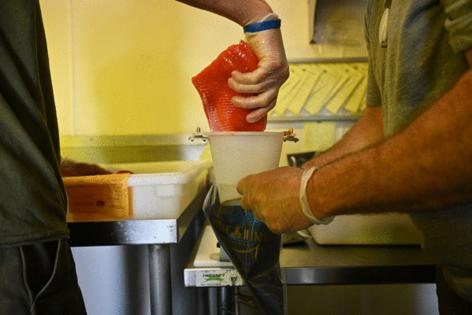
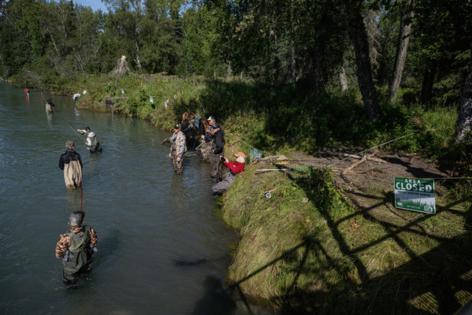
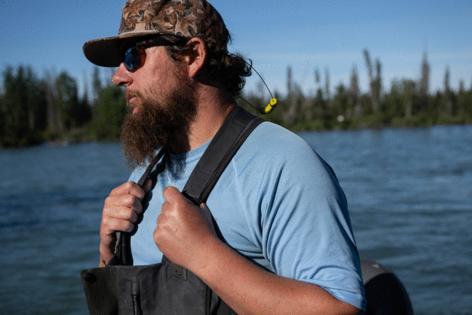
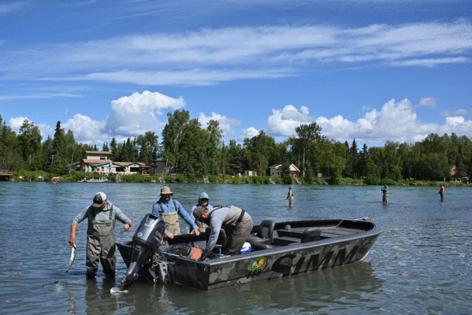
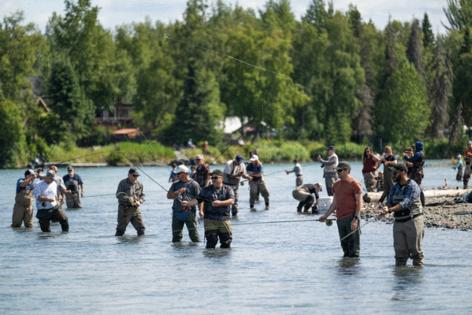











Comments